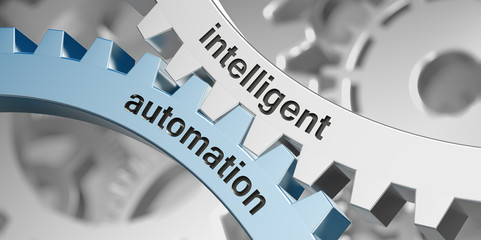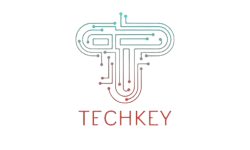Maximizing Efficiency: A Guide To Implementing Intelligent Automation

Did you know that companies have a goal to cut down their expenses by 30% by 2024? They plan to achieve this by employing automated technologies, like robots, AI, and machine learning. These modern instruments will redesign how businesses work.
This huge saving is a testament to the strength of intelligent automation in today’s world. The digital age has transformed workflows with intelligent automation.
Being efficient is critical for success nowadays, not a bonus. This guide explores why and how to maximize efficiency gains across your organization by implementing automation. So, let’s dive in.
Understanding Your Business Needs
Intelligent automation begins with looking at your business’s tasks. You want to spot repetitive, monotonous tasks. These tasks aren’t the best use of your team’s skills, but still must be done.
A careful process review will reveal these productivity drains and highlight where intelligent automation services fit in. Companies have automated tasks like these. They’ve seen significant gains in efficiency — and impressive 80% adoption of AI and ML tech to streamline operations!
The reward? Freeing up human minds for growth and innovation— ensuring strong ROI and competitive advantage. It isn’t an upgrade; it reinvents workflows. Intelligent automation becomes vital for operational excellence, propelling your business’s future.
Choosing the Right Intelligent Automation Tools
Robotic Process Automation (RPA)
Robotic Process Automation (RPA)can make things easier and quicker. It is good at reducing mistakes and making processes faster, like data entry and report making. These are tasks that need to be very precise and done rapidly.
For example, think about banking and money companies. RPA has changed how they work. They use it to automate things like loan processing and compliance reporting, making these tasks faster ā going from days to hours.
New stats show that most companies now use RPA, especially for better customer service and better management of supply chains. This increase proves how great RPA is for boosting business innovation and growth.
Artificial Intelligence (AI) and Machine Learning (ML)
AI and ML let systems make complex choices and analyze data deeply. These technologies excel where nuanced understanding and accurate predictions matter, like fraud detection, and predictive maintenance.
Artificial intelligence and machine learning revolutionize fraud detection in finance by analyzing transaction patterns. They flag odd activity in real-time. For example, credit card companies use them to lower false alarms while keeping security tight.
Recent times have seen AI and ML rapidly adopted by businesses seeking an edge. A study found organizations using AI for data analysis saw 40% quicker decision-making. AI and machine learning drive this automation’s intelligence. Thus, it improves efficiency and innovation.
Implementing Intelligent Automation
Planning and Preparation
Creating intelligent automation that works well requires lots of planning. Defining clear goals for the project is critical. Every person involved needs to agree on what should happen. Building a team of people with different skills is super important, too. They all must want the project to succeed.
Data safety is a huge deal when it comes to automation. Over half of businesses now spend more money protecting data. It is because you have to keep sensitive info safe.
Banks provide great examples of this. They follow very strict rules to protect data with automation. Healthcare is another area like this. Patient privacy is so crucial. Any automation must keep all private info safe and secure—There’s simply no other choice.
Deployment and Integration
Combining innovative tools with old systems marks an important step to go digital. It’s a tricky task to unite technology and human skills. The goal is smooth blending, not disruption. And these stats will prove it:
For example, a big store recently used RPA to manage their supply chain. Planning the integration carefully to fit their IT setup reduced inventory processing time by 40%.
Training staff is also vital. A huge bank introduced an AI customer service platform. Extensive employee training led to 25% higher customer satisfaction scores thanks to more informed, efficient service. Moreover, having a plan to manage change is crucial when technology impacts people.
Monitoring and Optimization
Implementing intelligent automation involves monitoring and improving continuously. It’s crucial to track metrics, understand automation’s effects, and ensure efficiency gains grow over time. This phase isn’t a one-time event but an ongoing cycle of enhancement.
A telecommunications firm increased earnings by optimizing workflows with AI for customer service. Moreover, a manufacturer reduced downtime using machine learning to predict equipment failures.
These examples show setting up automation and monitoring performance matter. Companies can then adapt swiftly and make data-driven choices, boosting productivity and profits and proactively monitoring optimization keeps businesses efficient as intelligent automation evolves dynamically.
The Future of Intelligent Automation
Intelligent automation will keep expanding. Intelligent Process Automation (IPA) pushes things forward. It mixes machine skills and human thinking power. Together, they become stronger. The IPA market is increasing and will keep growing. It shows how important IPA is for business work in the future.
Conclusion
Smooth operations require the automation of everyday tasks. Currently, embracing smart tech is crucial for firms. It offers an edge to endure the challenges ahead.
So, does your firm aim for rapid development? Explore intelligent automation services. They are the start of your trek to enhanced efficiency.








